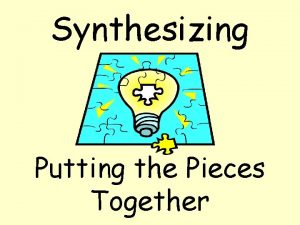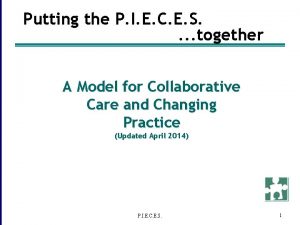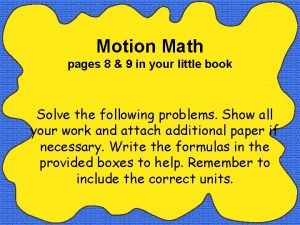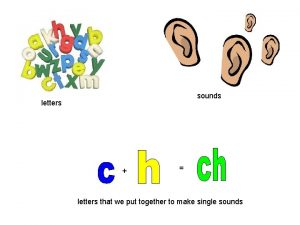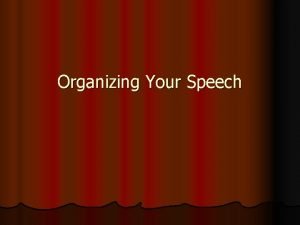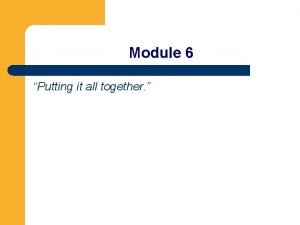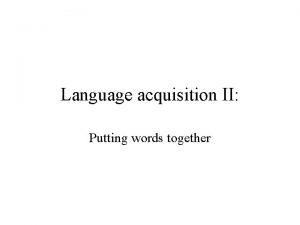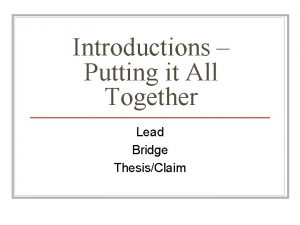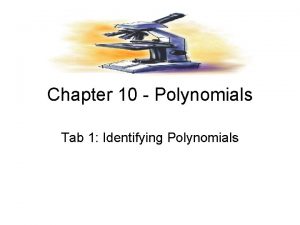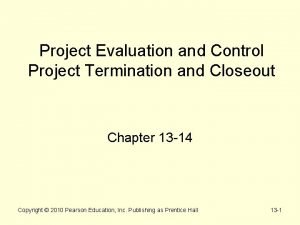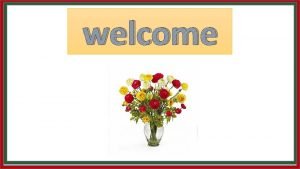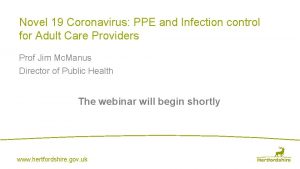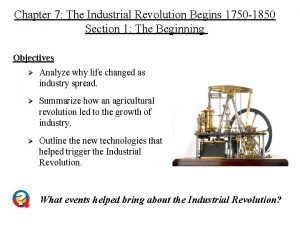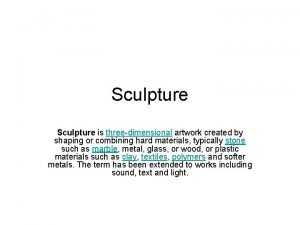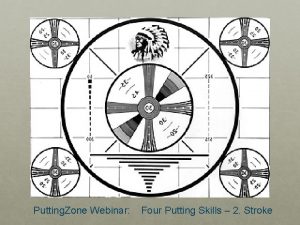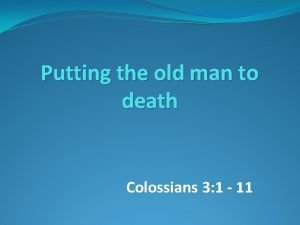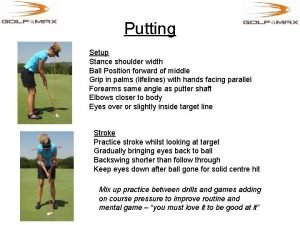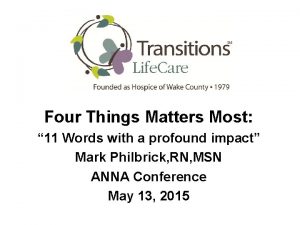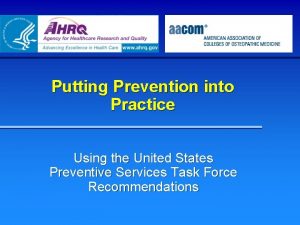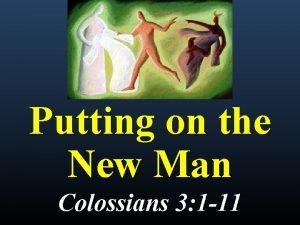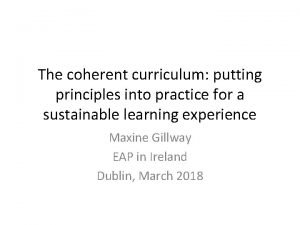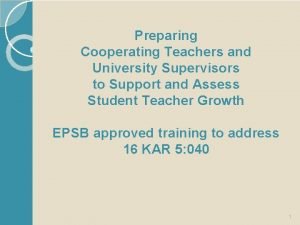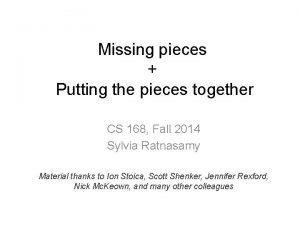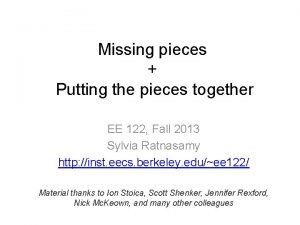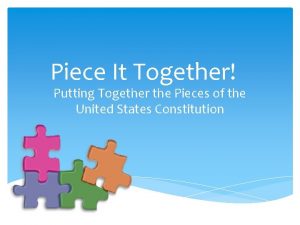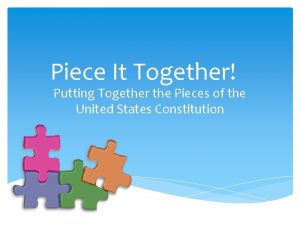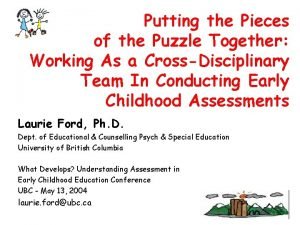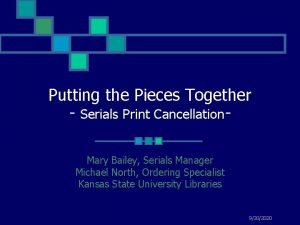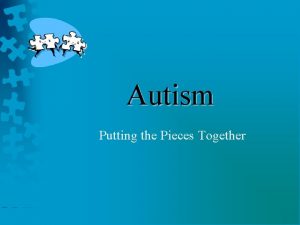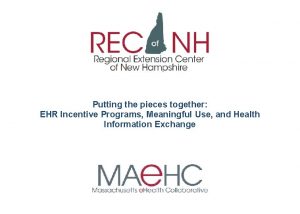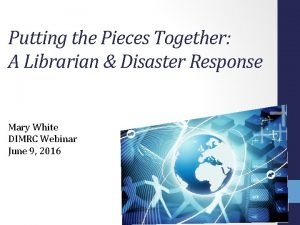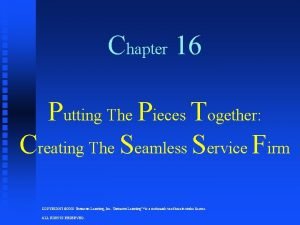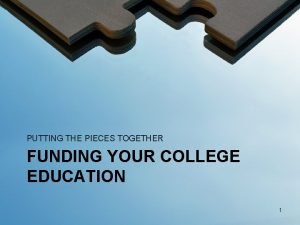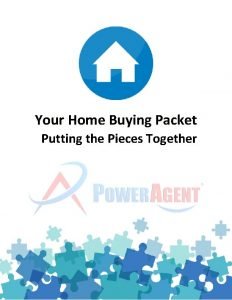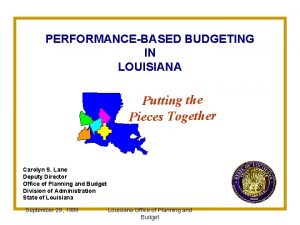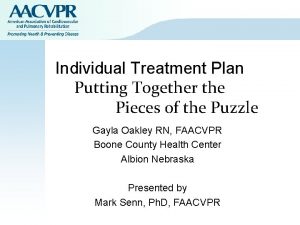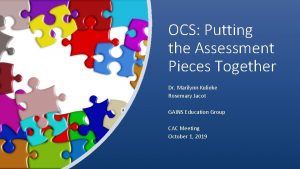Putting the Project Pieces Together Project Planning Training



































- Slides: 35

Putting the Project Pieces Together Project Planning Training 1

Agenda Items ¡ Introduction ¡ Planning Process ¡ Planning Steps ¡ Templates/Tools & Techniques ¡ Evaluation 2

Training Goals Understand: what planning is/is not ¡ where and when to start ¡ to adapt or tailor planning ¡ shortening the planning time ¡ what the project plan represents ¡ process and supporting materials ¡ 3

Project Approach Project Manager (marionette) vs. Project Management Approach (participatory) 4

What it is and is not Initiate Plan Execute Control Close Devising and maintaining a workable scheme to accomplish the business need that the project was undertaken to address. ¡ ¡ It is the work plan, not the work. It is a definition of needed work and resources 5

Level of Activity Where Planning Fits Execute Plan Initiate Start Close Control Time Finish 6

Planning Process Overview Planning Core Work Plans Facilitating Control Plans Integrated Project Plan 7

Planning Objectives Agreements on: Scope ¡ Objectives ¡ Work activities ¡ Estimates ¡ Resources required ¡ Roles & responsibilities ¡ How to change & update the plan ¡ 8

Importance / Lessons ¡ Straying from original goals, ¡ Inadequate resourcing ¡ Repetitive meetings - on what needs done ¡ Frustration - poorly defined, communicated, and coordinated work activities ¡ Issues not understood or related ¡ Decisions repetitively re-opened or readdressed 9

Input to Planning ¡ Product Description Project Charter ¡ Historical Information ¡ Organizational Policies ¡ Constraints ¡ Assumptions ¡ 10

Output From Planning ¡ Project Plan ¡ Updated Project Charter ¡ Supporting Detail 11

Process Flexibility On most projects: planning steps are the same the time spent and outcomes are flexible High Formality Complex Project Simple Project Loose Formality 12

Formality is based on Complexities BC = 5 Result Potential High Complexity (TC) TC = 3 (BC) 13

14

Planning diagram, Integrated Project Plan template. 15

Work 4. Develop Project Scope ¡ All the work, and only the work required ¡ Scope Statement - agreement of what is and is not Includes: l primary objectives (products/deliverables) l major deliverable milestones l assumptions l constraints l completion criteria 16

4. Change Management of changes to the primary objectives and major deliverables milestones. The plan should include agreements of: 1. Change acceptance/expectations 2. How changes will be evaluated 3. How change will be 17

5. Define and Sequence Activities ¡ Develop a Work Breakdown Structure(WBS) define work activities to manage, create and deliver the solution ¡ Determine Dependencies (Sequencing) determine the order of work activities or dependencies 18

Examples WBS’s List Format Table of Contents Format Hierarchy Diagram Format 19

Examples of Sequencing 20

6. Estimate Duration Determine Resource Needs ¡ Obtain initial estimate of likely duration for tasks does not take into account the number of people expected to perform the task. ¡ For each task - determine skills and resources 21

7. Determine How Quality will be Managed How will quality assurance and control be conducted? Wha t? • Identify Quality Standards How ? • Quality Assurance Chec k • Quality Control Quality Plan Sometimes performed by a 3 rd Party 22

8. Determine How to Meet Communication Needs The plan should determine: • who needs what information • when will they need it • how will it be given to them • by whom And determine how to: See PMO Standard Directory Setup • store, update, and disseminate information • close, file and archive information • update the comm. plan 23

9. Develop Schedule determining start and finish dates for tasks and assigning resources May Jun Jul Aug Sep Oct Nov 24

Define - then schedule Define Scope Define WBS Define Resource s Define Deliverabl es Define Dependen ts 25

Terminology This is a schedule or Gantt chart, not a WBS, not the project plan 26

10. Estimate Resource Costs Develop cost estimates for: ·internal & external labor (hrs, rates) refined during the ·materials course of the project , ·supplies definitive just prior ·contracts to construction ·special costs Estimate ROM + or 50% Intermediate + or 30% Definitive + or 20% 27

11. Organize and Acquire Staff 28

12. Determine What to Procure and When Procurement planning determines: ·whether, what, and how much, Actual solicitation ·how and when, is part of execution ·how to manage solicitations, selection, contract administration, and closeout Procurement documents: ·SOW - Statement of Work ·RFP - Request for Proposal ·Evaluation Criteria 29

13. Build Budget and Spending Plan Budgeting involves assigning the cost estimates to all the tasks creating a cost baseline. 30

14. Identify Risk & Create Risk Response Plan Risk planning involves: ·identifying risks w/high effect and impact ·planning for risk mitigation or contingency Common sources of risk: ·Changes in requirements ·Design errors and omissions ·Roles and responsibilities misunderstood ·Poor estimates or unsupported estimates ·Insufficiently skilled staff 31

15. Integrate the Plans Previous steps are reiterated to create a coherent plan. for example: • initial draft - reflects generic skills and duration • final plan - reflects specific resources and dates 32

Hardcopy Binders PMO Project Management Guide 33

34

Thank you for your time 35
 Together
Together Putting the pieces together case study answer key
Putting the pieces together case study answer key Putting it all together motion answer key
Putting it all together motion answer key Letters put together
Letters put together Putting a package together
Putting a package together Putting a speech together in a particular way
Putting a speech together in a particular way Practice putting it all together
Practice putting it all together Putting two words together
Putting two words together Introduction bridge example
Introduction bridge example 6x²y³÷xy²= _______.
6x²y³÷xy²= _______. Putting things together is called
Putting things together is called Putting it all to bed during project closeout includes
Putting it all to bed during project closeout includes What fires together wires together
What fires together wires together Putting-out system
Putting-out system What is nasreen putting chocolate on?
What is nasreen putting chocolate on? Putting-out system
Putting-out system Proletarianization ap euro
Proletarianization ap euro Pricing tripod in service marketing
Pricing tripod in service marketing Putting objects in perspective
Putting objects in perspective Ons pep
Ons pep The order of putting on ppe
The order of putting on ppe Ordering fractions
Ordering fractions Putting people first 2007
Putting people first 2007 Putting-out system
Putting-out system Classification of polynomials according to degree
Classification of polynomials according to degree Putting the enterprise into the enterprise system
Putting the enterprise into the enterprise system A process in sculpture putting additional parts
A process in sculpture putting additional parts Putting zone
Putting zone Putting to death the old man
Putting to death the old man Putting the enterprise into the enterprise system
Putting the enterprise into the enterprise system Putting stance width
Putting stance width Putting it into practice
Putting it into practice Putting prevention into practice
Putting prevention into practice Putting on the new man
Putting on the new man Coherent curriculum
Coherent curriculum Planning together
Planning together
